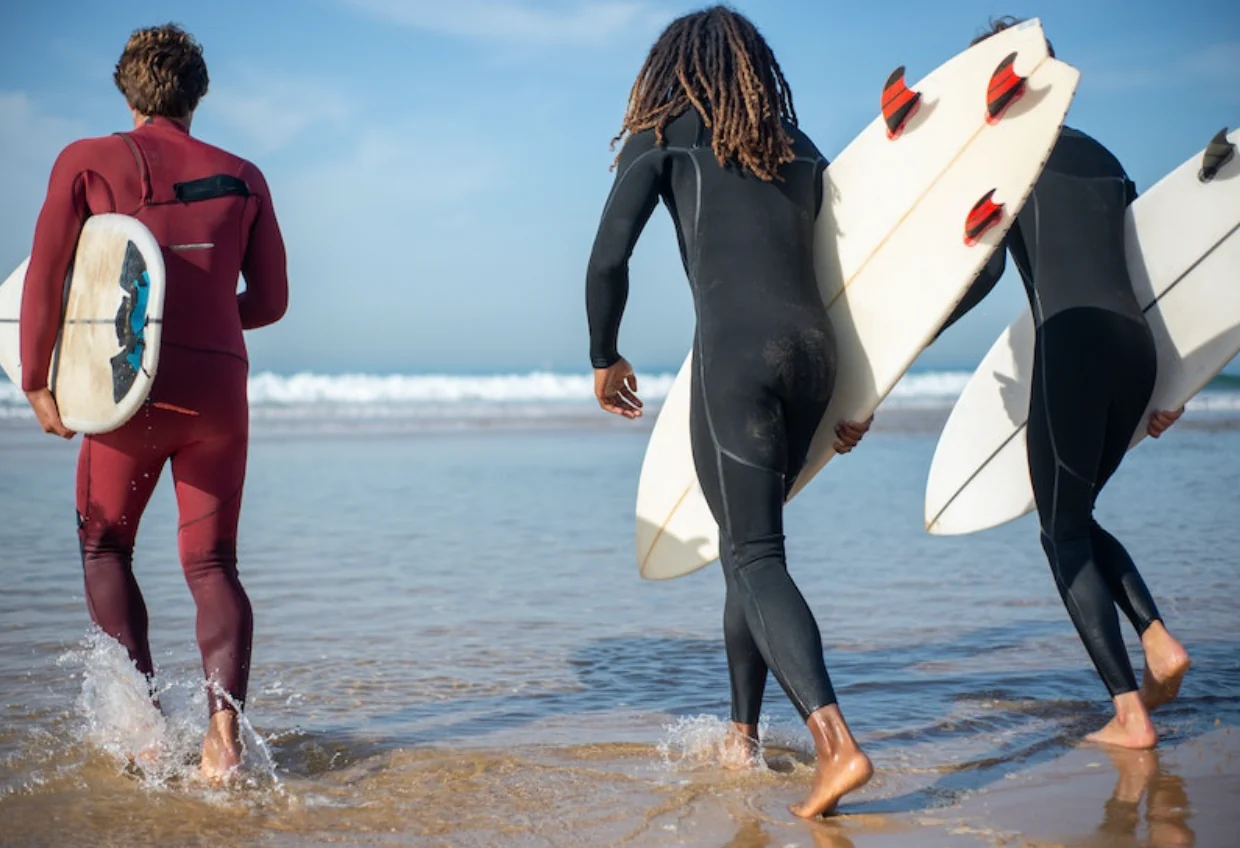When you want to enjoy the water for swimming, surfing, or diving, a swimming wetsuit is an important piece of gear that will boost your comfort and performance. Wetsuits insulate you from the cold so you can stay warm in the water without getting hypothermia or muscle tiredness. But picking the right wetsuit for the water temperature is important to get the most out of your comfort and efficiency. Here is a guide to help you choose the right jacket for each type of weather.
Understanding Wetsuit Thickness and Its Impact on Insulation
Wetsuits come in various thicknesses, usually measured in millimetres, and this thickness determines the level of insulation a wetsuit provides. Thicker wetsuits are designed for colder waters, while thinner wetsuits are suitable for warmer conditions. Two numbers, like 3/2mm or 5/4mm, are usually used to show the width. The first number tells you how thick the wetsuit is around your body, and the second number tells you how thick it is around your arms.
Warm Water (Above 68°F / 20°C)
For warm water conditions, wetsuits are not as essential since the water temperature is usually comfortable enough to swim in without extra insulation. However, wearing a thin wetsuit can help you maintain buoyancy, protect your skin from abrasions, and prevent sunburn.
A 1mm to 2mm wetsuit is ideal for warm waters. These wetsuits are typically made of lightweight material, providing minimal thermal protection but offering flexibility and freedom of movement. The wetsuit will also shield you from windchill, making it perfect for high-speed water sports such as surfing or jet skiing. For those who are sensitive to the cold or plan on extended periods in the water, a wetsuit in this range is a great choice for comfort.
Temperate Water (60°F to 68°F / 15°C to 20°C)
As the water temperature begins to dip below 68°F (20°C), a thicker wetsuit becomes necessary to maintain warmth. A 3/2mm wetsuit is the go-to option for these conditions. This wetsuit is typically made from a combination of a 3mm thickness around the torso and a 2mm thickness on the arms and legs. This provides enough insulation to keep you warm without feeling overly restrictive. It’s suitable for both beginners and experienced swimmers who are engaging in moderate-intensity water activities like recreational swimming, surfing, or diving.
A 3/2mm wetsuit offers the perfect balance between warmth and mobility, allowing you to enjoy the water for extended periods while preventing fatigue from cold temperatures. If you are planning on spending longer hours in the water, consider a full-sleeve wetsuit for added coverage, as cold water can quickly sap your energy.
Cold Water (50°F to 60°F / 10°C to 15°C)
For colder water conditions, more insulation is required to protect the body from the adverse effects of prolonged exposure to cold. A 4/3mm wetsuit is perfect for these temperatures, offering increased thermal protection while still maintaining flexibility. This thickness is most commonly used by surfers, divers, and swimmers who need to stay in the water for long periods but still need mobility to perform their activities.
A 4/3mm wetsuit provides more coverage for the body while still allowing for a decent range of motion in the arms and legs. This wetsuit style often comes with additional features, such as thicker neoprene and water-tight seals around the wrists and ankles, to help keep the cold water from entering and affecting your body temperature. If you’re diving or participating in water sports that require a lot of movement, this wetsuit provides the necessary balance between warmth and flexibility.
Cold Water and Extreme Conditions (Below 50°F / 10°C)
When the water temperature goes below 10°C (50°F), the wetsuit needs to be much thicker to keep the body from getting too cold and to keep the core temperature steady. In very cold weather, a 5/4mm wetsuit is suggested because it provides heavy-duty insulation for the body and arms.
Extra features like gloves, hats, and boots are often included with wetsuits for very cold water in addition to the thickness. These extra features cover the whole body and prevent frostbite. In these temperatures, you need full-body wetsuits with an inner thermal covering and airtight seals to keep you as warm as possible. People often wear these wetsuits when they go diving in cold water, swim on the ice, or surfing when it’s really cold.
Conclusion
Choosing the right wetsuit is a balance between the water temperature, your activity level, and your personal comfort preferences. There is a wetsuit made to keep you comfortable, safe, and working at your best whether you’re in warm water or the coldest water possible. For warm water, a thin wetsuit will suffice, while cooler temperatures call for thicker insulation. In freezing waters, thicker wetsuits combined with accessories like gloves and hoods will ensure you stay safe and warm. Always remember that your comfort and safety should be a priority when selecting the right wetsuit for your aquatic adventures.
